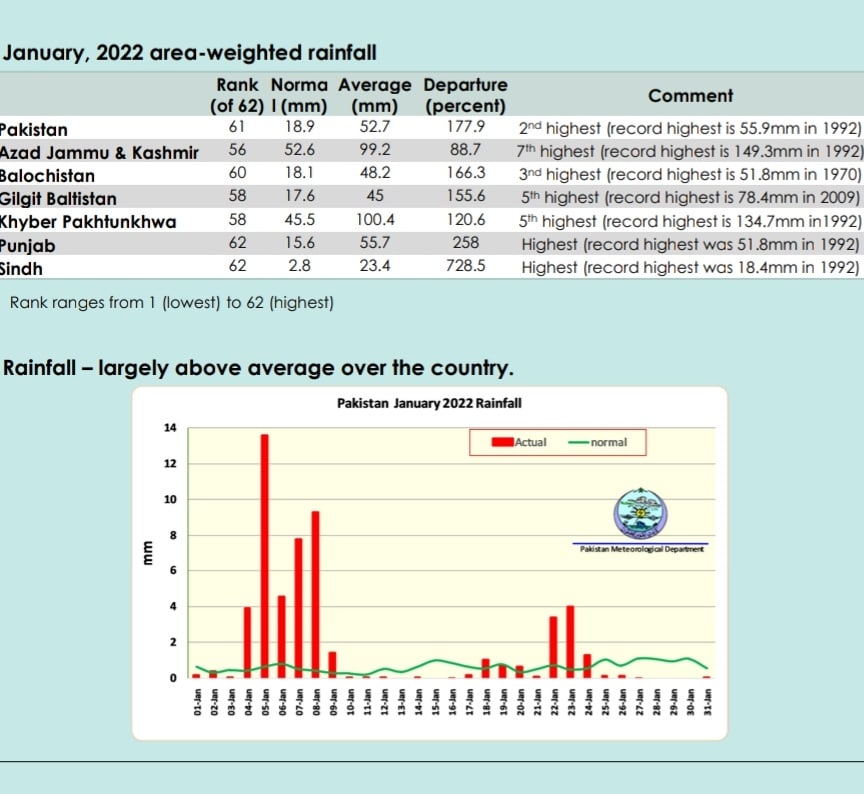January 2022 was Pakistan’s second wettest January in the last 62 years as the Meteorological Department reported that 177.9 percent above normal rainfall was recorded in all the provinces, as well as Azad Jammu and Kashmir (AJK) and Gilgit-Baltistan (GB).
It mentioned that the previous highest record was 55.9 percent in 1992.
The highly populated province of Punjab recorded 100.4mm average rain last month as compared to 55.8mm in the year 1992. Sindh recorded 23.4mm rain this year as compared to the last highest 18.4mm in 1992.
Pakistan’s largest province, Balochistan, recorded 48.2 mm of rain, while its average annual rain is 18.1 mm.
Khyber Pakhtunkhwa received the heaviest amount of rain with an average of 100.4mm. Its rainiest January in 1992 was recorded at 134.7mm.
AJK and GB received 99.2 mm and 45 mm of rain last month to record the 7th and 5th wettest January in history.
Moreover, three major snow and rain systems also entered the country in 2022.
Why Does it Happen?
Experts say that climate change is affecting many aspects of the country directly or indirectly. The point of concern is that Pakistan is among the top seven countries in the world that are being affected by climate change-related patterns. For example, the country’s warmer average temperature is changing, as are its weather and rains patterns.
More extreme variations in weather are also dangerous. Frequent and intense heat events can increase illnesses and deaths, especially among vulnerable populations, and can also damage crops.




























climate change is cooling the weather not the other way around it.its called global cooling.we are seeing less and less heat events.and more rains causing cooling.